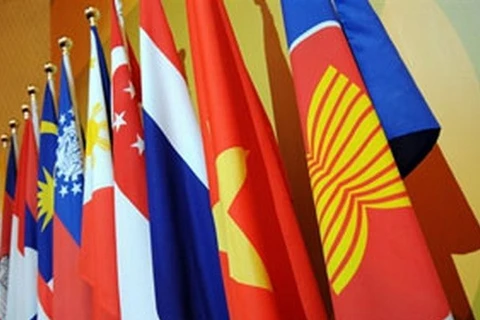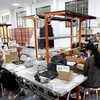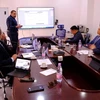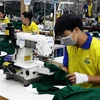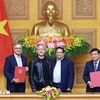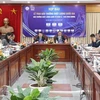Vietnam is the country likely to achieve the biggest gross domestic product (GDP) increase in percentage terms by joining the Trans-Pacific Partnership and ASEAN Economic Community in almost all simulation scenarios, according to a study by the Vietnam Institute for Economic and Policy Research.
The study results, announced at a workshop in Hanoi on August 3, observe that when decomposing the GDP change, the increase in GDP, thanks to trade liberalisation, will come primarily from increases in consumption and investment.
Regarding investment, the gain for Vietnam is the highest among member countries, approximately the same as Japan's and almost double that of Australia, Malaysia and the US (in scenarios without spillover effect of trade facilitation to non-TPP economies).
With regard to the sectoral changes due to the TPP, the study observed an adjustment in Vietnam's production and labour away from industries without a comparative advantage or with eroding comparative advantage (such as agricultural sector) and towards comparatively advantaged ones or those with negligible trade (especially apparel, leather manufacturing and utility services and construction).
Vietnam's trade with other TPP countries increases in all cases while imports from non-TPP economies increase slightly and exports decrease slightly.
Its exports of textiles, apparel, leather and footwear to the US surge while Vietnam's total exports slightly decline.
The possible reasons for this decrease include the contraction of a number of domestic industries due to competition from other countries, competition (and constraints) in primary factors, and the change in trade directions from outside TPP to TPP.
The study, funded by the Japan International Cooperation Agency, also give recommendations to help the country prepare well for both opportunities and challenges from the TPP and AEC.
First, this study again confirms the need for institutional reforms and liberalisation of primary inputs such as labour, capital and land. Integration without those reforms will not only hinder Vietnam from taking advantage of the opportunities, but also create negative impacts on its exports and economic growth.
Skilled workers are much needed not only to take advantage of the current comparative advantages but also help to create more and/or alternative comparative advantages.
Second, once the TPP and AEC are implemented, resulting in reduction in tax revenues from tariffs, the Government may try to offset the budget deficit through other sources. These may include increasing other taxes and borrowings or cutting current expenditure, subsidies, and/or public investment to balance the budget.
Policies to balance the budget need to be thoroughly considered to achieve macroeconomic stability and promote production and consumption.
Third, Vietnam needs to implement policies to foster sectoral restructuring to enhance productivity. For expanding industries, the most important factor is to ensure mobility of production resources such as labour, capital, land and other resources to these industries.
Fourth, FTAs nowadays do not only require tariff removal but also focus on non-tariff barriers such as transportation costs and customs procedures. The AEC aims to establish a single market with the aim of attracting investment from outside the community.
The TPP, on the other hand, has a strategic role in redesigning the world's trade and investment structure and direction. Participating in these blocks, thus, requires Vietnam to adjust non-trade issues such as labour and intellectual property rights. Therefore, the implementation of the related commitments requires thorough reforms in domestic policies and legal system.
Finally, with the implementation of the TPP and AEC, Vietnam's investment (including domestic and foreign investment) will increase significantly due to increases in trade and investment from within and outside these blocks.
The head of the institute, Nguyen Duc Thanh, said since the TPP and AEC would have great impacts on the economy and economic growth the country needs to prepare well to tap these opportunities.
"Lessons from joining the World Trade Organisation show that if no careful preparations are made, it would be hard to control both advantages and disadvantages brought in by the TPP and AEC," he said.
Okiura Fumihiko, senior representative of JICA, told the workshop that, being a member of both the AEC and TPP, Vietnam would enter another phase of wider and deeper integration.
Vietnam's GDP growth stood at 6.28 percent in the first half of this year. It is projected at 6-6.2 percent for the year.-VNA



